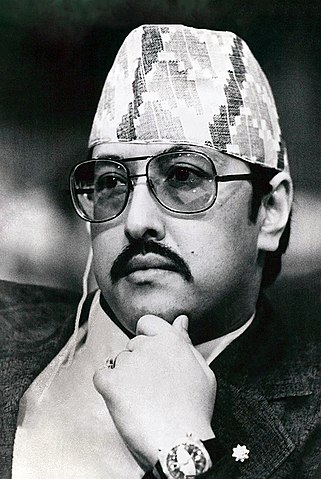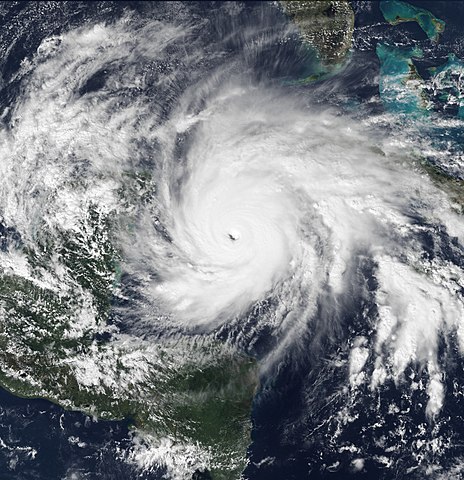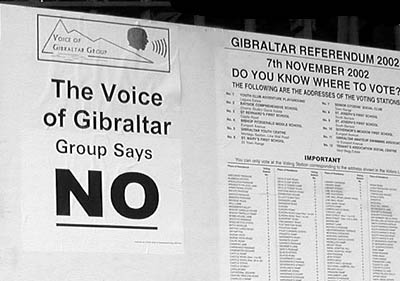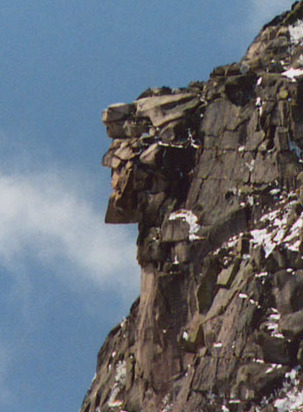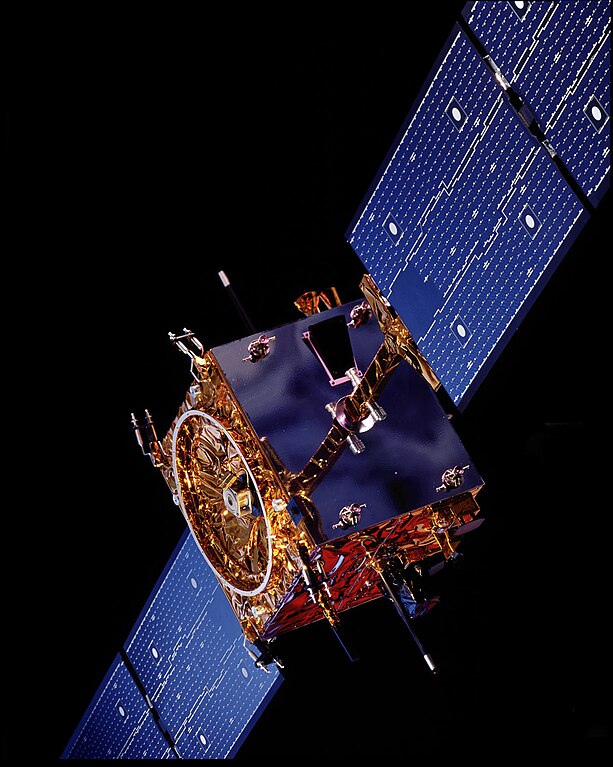The Brass Age of Comic Books Overview Pt. 2: 1994-2002
The Latter Half
The Brass Age represented a sort of rebirth over for the comics industry, seen as the two big publishers would start relatively fresh regarding the continuity of their universes along with the rise of new talent over with independent comics. However, the scope of this rebirth would not become fully seen until the mid-1990s when two big changes would occur. First, would be the reshuffling of the comics department of Disney of all people. During their growing cooperation with dubbing animated films of Miyazaki, they would be exposed to certain pop culture phenomenon and one that caught their attention was the magazine
Shonen Jump. A Japanese manga anthology magazine, the magazine would have the latest chapters of various shonen manga, with various chapters being collected into books and then later sold. To a few creatives and financial folk, this seemed like a fascinating opportunity. They could introduce a smorgasboard of ideas and stories to readers, keeping them hooked to the subscription and they in turn would likely buy the compliation books later on to read them more directly, or updated versions if there were some potential troubles. As such, the
DisneyZone Magazine was created for the youth of all ages to enjoy, showcasing all sorts of creative talent, often using it for the superheroes that Disney acquired from Harvey and licensed from Archie, with Bee-Man and Bob Phantom becoming the biggest hits. At the same time, the more traditional characters were not ignored. They were retooled into small digest books much like Archie had some, available at various supermarkets and the like, allowing for the Disney comic scene in the US to begin growing, especially with the sort of reboots of the series, if enough to allow new readers to get on board. However, the big focus here was on the new way of readers to get into comics; they could remain subscribed over to
DisneyZone magazine to get their comic fix from where magazines are sold and then buy the collected volumes in places like official Disney stores, some bookstores and even online, something they were among the first to get to thanks to talks between them and Akashica. Other companies watched, some with bemusement and others with skepticism. Howeverm the whole point showed that comics did not have to be limited in publishing models
Though speaking of Akashica, they were the other great factor. Comic books and also graphic novels available to the public and would spread like wildfire in interest, especially since it felt more accessible than comic book shops or other niche stores. Bezos even encouraged donatons to small town libraries and the like, believing that with the spread of the American public ISP, it would allow access to Akashica and the people could get it more after sampling from libraries. Additionally, it introduced the mainstream media to the secret world of graphic novels. Various masterpieces like
Maus and the like would find their hands to many fascinated and new readers, becoming inspired and awe. Through the use of image and word combined, mature and complicated stories could be told, not scrutinized nor made light of, especially with some of these stories being memoirs. While some folk were certainly surprised or put off, the growing number of graphic novel readers led to a large boom of it with authors and artists getting onboard with the concept. Graphic novels also began appearing over in bookstores thanks to this notoriety and no doubt also for them to try and keep up with Akaschia, who was muscling in more with them in competition. Comic books and graphic novels were booming in the mainstream and exposed to a new level of influence and variety than ever before. Old genres that have not been seen in decades such as war comics or horror comics would be making their revivals bit by bit with graphic novels. Underground comic began thriving even more and spreading, especially with the rise of internet usage thanks to the public American ISP increasing word of mouth and the like. The latter half of the Brass Age would see comics moving beyond their shiny new start, beginning to move and evolve in brand new ways regarding plot, characterization and long-term planning. So much so that after a certain point, if woudl cease being the Brass Age. Various comic book historians and other cultural analytical hobbyists typically put 2002 as the end of the Brass Age of Comic Books, marked by the general trends, including a few prominent events from this year and the one prior.
DC Comics
DC comics continued to develop pretty well throughout the 1990s, focusing on further fleshing out what it had done since the mid-1980s. While it would need to do some clarification to explain the differences in their new continuity (which was done through their
Zero Time crisis event), it would be an overall modern start over for DC comics as they would work to establish everything as cohesively and unified as they could while maintaining the potential for creativity. There was a focus on not just updating the basics of each hero while remaining core with their characterizations, but doing more, especially with their supporting cast. Superman returned to being a reporter over for the Daily Planet and explored of his humanity, especially with his supporting cast like Lois Lane being fleshed out. The importance would be seen in the arc "The Death of Clark Kent?" in which Superman survives a dangerous attack while as Clark Kent, but is in recovery. As Superman heals and reconciles how important being Clark is, it also introduced some new supporting members, including the mysterious Superboy/Connor Kent, a modifed clone of Superman and Steel, a hero named John Henry Irons wielding a strong suit of power armor and showing the legacy of Superman, especially as they aided him. Additionally, new villains were introduced to challenge the Man of Steel, including some coming from the animated television show such as Luminous and Volcana, older ones such as Morgol (a renamed Mongul) becoming much more prominen. One notable addition was from the "The Death of Clark Kent" being the powerful telekinetic Chester Black aka Elite, a pragmatic and ruthless individual who wants to be heroic, but who's means and issues make him a villain, along with serving as a warning against the ideal of "ends justifying the means", namely when the means render the ends moot or impractical. Batman would also see this growth; with the retirement of Jason Todd (after his aggressive behavior nearly got him killed by the Joker and thus he left), a third Robin would appear in Tim Drake, serving as a new force of light and perhaps a greater heir in terms of "world's greatest detective." Tim interacted well with the Batfamily, serving as a younger brother for Dick and would become known for being a rising SATMIN icon for being multi, though with his prominent love interest being Stephanie Brown/Spoiler. As for Batman himself, besides his and Catwoman's relationship becoming more serious (and in turn, analyzing Selina outside her bond with Bruce and analyzing what her motivation would be and the future of it), a new villain would be introduced: the Court of Raptors. This mysterious order of financial elites, they have been present since the days of the Thirteen Colonies and running Gotham from the shadows for that long, having been hinted at in the
Batman: No Mans' Land story, which saw Gotham isolated from a disaster caused by a comet strike. For DC, this was their answer to the necessity of Batman and would become appreciated for how clever it was. Why else would Gotham's system remain corupt and unable to handle supervillains? Why did the mob remain in power longer there than anyone else? The Court of Raptors, using the mob and later supervillains as unknowing fronts while they remain in the background, with Bruce beginning his ultimate case against them for the soul of Gotham's future.
Wonder Woman meanwhile saw an intense growth of interest as they continued to have her face challenges and grow stronger. From her exile from her island forcing her to better adapt to the modern world and fully find her independence and sense of self, to the growing cast of supporting characters and villains. All while exploring various facets of Greek mythology and other strange villains. Some were modernized takes on Greek stories while others were her handling her personal life mixing in with her life as a heroine, especially as Circe would start becoming a top contender as her archfoe. Her "sister" in Donna Troy would have her backstory be simplified from Troy gaining powers after a blood transfusion from Diana and someone else (revealed to be Hercules, who explained to Diana it was to stabilize the presence of ichor, the blood of the gods, in Donna, which proceded to give her superpowers). Diana would find purpose over as a librarian, setting a motif of archiving along with past and future. She would even get a second sidekick of the same generation of Tim and Connor in Cassie Sandsmark, who's mother is an antiquarian and exposure to one gives the outgoing nerdy Cassie powers of her own. The late 1990s also saw the offical return of the Justice League under Grant Morrison's pen, introducing arguably the most famous iteration of the team and used in the animated series. The Flash would further flesh out Barry Allen and Wally West while shifting away from the time travel usage due to concerns of continuity. Martian Manhunter would become more popular as the character did, focusing on a mix of melancholic beauty, cerebral writing and humanity through the eyes of J'onn Jones, the heart of the Justice League. The Atom would see a resurgence in popularity in the scientific escapades of Enrichetta Negrini, the third Atom with showing how her abilities would be quite helpful along with her mind and outsmarting her foes. Of course, Green Lantern would reach the big hit with "The Death of Hal Jordan" arc, seeing John Stewart becoming the full Green Lantern of Earth along with the rise of Kimiyo Hoshi in her own right as the 4th Green Lantern. Hal's death was such a turning point that it would be viewed as one of the things that signaled the end of the Brass Age of Comics. Aquaman continued to grow in surprising prominence as it embraced more fantasy and medieval setting (it is a kingdom ruled by Arthur after all) and thus combining it with some amazing underwater artwork and exploring the possibility of antediluvian works.
Other heroes and villains were given time and attention, with some from the television shows making their way in, such as the Joker's suprisingly sympathetic moll in Harley Quinn. New teams such as Young Justice formed from the aforementioned three new heroes along with the mysterious Bart Allen, a young whom claimed he is Barry's grandson from the future. Of course, some of these changes left things up in the air, such as on the
Legion of Superheroes, though it was confirmed that they and the Justice Society are in continiuty, and just being sorted out, as seen with some new Justice Society material coming out along with rumors of new Legion materal. And this did not even include the events from Vertigo or Milestone Comics, both who kept on growing in prominence and representation of characters. Their biggest achievement would be on Static getting his own television show, even if not necessarily party of the so-called DCAU (though he did crossover into there via a universe-hopping criminal he was chasing). Vertigo meanwhile would keep up well with the growing graphic novel demand and introduce many to strange and new ideas along with inspiring various peoples.
Marvel Comics
Marvel would have their own sort of fresh start in the late 1980s and early 1990s, coinciding their acquisition by Paramount. While there some controversey behind the move, especially in seperating the X-Men franchise from the rest of the Marvel universe and into its own continuity (or rather merging it with the New Universe), it would be considered ultimately for the best. Marvel would be able to take a good long look at some of the various aspects of their property and begin considerable efforts in cleaning up the whole thing, working to create a cohesive order of events. Additionally, it would allow them to make changes and updates to concepts, plotlines and ideas that did not age well or would no longer be viable over in this more modernized time. Captain America maintained his timelessness with him being unthawed into the new world around 1995 and would still be fighting historical enemies. While Soviet era enemies would be retired or become heroic, other foes like Nazis and the Red Skull would remain as prominent foes. All the while trying to find his place in the modern world and dealing with counterparts and rivals, such as John Walker aka U.S. Agent. For Iron Man, it was showing Tony Stark getting some changes on portrayal, as an innovator wanting to give the world plenty of clean energy, but wrestling with his family's past in arms manufacturing and his own work being weaponized, which is what has him don on the suit, all while exploring themes of misuing technology and greed. Hulk meanwhile become one of the psychological studies and to take disassociative identity disorder serious in writing Bruce Banner, a victim of child abuse and having to deal with his inner truama, but also the mighty power that he has contained within himself as the Hulk, as the strongest one there is. Another example was in exploring bipolar disorder over in with Dr. Hank Pym/Antman and how that impacts relationships as seen with his wife Janet and their ups and downs (including mocking the supposed him hitting her, which was done with him accidentally smacking her when he was flailing his arms after she pranked him by messing with his helmet, with him apologetic and she laughing it off because it was an accident). The Avengers were becoming more prominent once more and lesser known heroes getting the spotlight.
Carol Danvers/Ms. Marvel would be one such case, with her having become the premire cosmic hero in her protecting the world from galactic threats along with her trying to find her own place in the world beyond the military. She was also increasingly tied more over with the Kree, who along with the Skrulls, were having a bit more and more prominent development, with some rumors of potentially even crossing Carol over with the old Inhumans story. She was differentiated over from Richard Rider/Nova as she stuck closer to home and also became more involved in NASA. Her rising popularity was a result of Marvel's invested changes in her paying off, especially as they tweaked and refined her to stand out in her own right. Another hero that was tweaked would be
Namor of all characters. Despite being the first "mutant" of Marvel, he wasn't necessarily aligned with the X-Men and his age meant he was grandfathered into remaining with everyone else. One large change however was making him more and more different than Aquaman, which included changing where he came from or at least clarifying it... instead, they would claim Namor is from Lemuria, the sunken continent said to lie in the Indian ocean and would even begin taking some mild inspiration from some of the lore and even the region for fleshing our Namor and making him different, including him making him tanner than how he was (though this was noted in-universe as having stayed in places with not much sunlight often). Spider-Man would also be affected his stoies were retold with a fresher perspective of growing up and coming in age though there was some rumors of some long-time writers still not happy of Peter ending up with Mary Jane Watson over Gwen Stacy, who's characterization was fleshed out a bit more here. He was still a prominent and popular hero though also trying to figure out where to take him after college and so on though the upcoming wave of new and young authors provided some sense of hope, especially with a new author coming for Peter in J. Michael Straczynski in 2001. Other new changes would see Spidey reform a few of his villains, notable Sandman, who would end up even becoming a reserve member of the Avengers. Black Panther was also increasing in prominence as they would take note of history and try to push T'Challa to a greater focus on the world stage along with that of Wakanda. The Fantastic Four kept serving on the forefront in exploring the cosmos and what laid beyond along with getting a bit of input from Stan Lee. They would expand with a few more family members such as Franklin Richards, the son of Reed and Susan, or Lyja, a Skrull woman who tried to infiltrate the FF, only to fall in love over with Johnny Storm and her joining the team. More and newer characters were coming in and given fresh coats such as the New Warriors and the like. Overall, Marvel's main universe was trying to find their footing on what would be coming and how to move forward. That said, many do believe that one growing sign of change was them foreshadowing a new group known as the Young Avengers...
Meanwhile, Marvel's other imprints have been growing as well. Epic Comics remains an underdog to DC's Vertigo, but they have not yet stopped trying to compete, especially with the rising new talent.
Neoversal meanwhile would be delayed by a few years, but would come out and amaze as the X-Men are refitted over in the world of the New Universe. Dates are tracked and the age of human mutants begin when the White Event awakens their superpowers, all the while the various other groups appear and are reimagined for this new interpretation such as Psi-Force, DP7 and the Starbrand alongside things like the Phoenix Force. The X-Men under Charles Xavier working together to make the world a better place while Magneto's own truama has him create his own group in leading with the White Event. All the while, new mysteries are brought and discovered, such as Apolcalpyse and his kin being created from a previous White Event and that those individuals were mistaken as various gods across the world. All while other organizations ty to control, exploit or handle the situation such as the Troubleshooters and the like, along with some of the traditional X-Men villains that also appear. "Anti-mutantism" was removed of any allegorical meaning given the realism angles, but still framing it as overreach by larger and oppressive groups though it did force writers to explain matters. This did include things like how even the Sentinels were pretty damn implausible over in the setting (at least in their original . While there is a bit of tension behind the scenes due to the micro-mangaging required to adhere to events properly along with having to scale the powers in a certain way, various writers find it worth it to be able to write for some of their favortie characters and the new status quo for mutants being seperated from the rest of Marvel was largely accepted. Of course, they still crossed over in largely noncanonical one-panel or one page gags, one of being a continous saga of Kitty Pryde trying to find a boyfriend that won't be chased off by the writers and deciding to date Peter Parker/Spider-Man, who faced similar troubles regarding girlfriends. While the whole thing was played for laughs and a potshot at some of the unprofessionalism of some of the older writers, most did find them as a pretty cute couple, including some of the aforementioned writers. While Marvel was still trying to figure out the direction of their properties, there was still the essence of change and driving the company forward. Another trend noticed was Marvel taking a page from their "Distinguished Competition" in how they portray their characters. Mainly, how DC had more "main characters" than Marvel did, namely because of the differing focuses of world-building. As such, Marvel has been focusing on having some of their properties spread out rather than all centered over on New York City. This meant focusing characters on certain regions and the like to have them grow, even if many of the big names still focus on New York City.
Other Big Names and Independents
Image continued trucking along, even as they were having to go and do a balancing act with their various works and projects. It was even some growth over when Image began expanding outside of the traditional framework of superhero comics and the like. Horror comics and war comics were among the new types that were returning, especially with the rise of graphic novels coming out through the latter half of the era. One rising name was Garth Ennis, a noted critic of the dominance of superheroes in the medium of comic books. As such, he gravitated toward the return of variety, especially with war comics. While he would became famous for
Preacher, an Image comic series that served as a scathing condemnation of religion (or more accurately, Christianity), he would lean toward making war comics after the end of the run of
Preacher, focusing over on World War II times and going from there. Ennis seemed to fit well with Image, even with some of the controversy he brings (from his mockery of Captain American earning him ire to some of the direction of his war comics being questioned). Sineater by Todd McFarlane was still doing quite well and would even draw on a growing impact on the pop culture sphere as they were being pushed to diversify in mediums. Meanwhile, the Wildstorm Universe under the holding company of Aegis Entertainment would depart Image ansd find a new home in Dark Horse Comics for the sake of financial security. While a new kid on the block, Dark Horse has been able to keep themselves afloat through comic book adaptation of various works and their growing ties to television and film (especially MetroCentury), has led to providing the financial security needed. The Wildstorm Universe would be able to keep up with their superhero verse and their teams such Stormwatch and WildCATS along with their own independent works and imprints, such as America's Best Comics, with Alan Moore creating Tom Strong. Valiant Comics remained the underdog though their works and especially the Ultraverse was having enough appeal to remain afloat and profitable for the time being. Overall, the newcomers were doing pretty well for themselves and taking advantage of the new open field.
The older and more quiet companies were a bit mixed. Archie Comics were having to face more and more the problems of not doing enough with Archie and the gang regarding the appeal of their work, being viewed as too safe or inflexible. At the same time, they were not wanting to just follow shallow trends or whatnot as they wanted to try and maintain a sake of timelessness for their work. That said, even they were looking into possibly revamping some of their work or at least diversifying their approach. After all, the last time they made headlines was the introduction of the first SATMIN character, samgen man Kevin Keller (barring the ace suspicions of Jughead). Meanwhile, Disney's gamble regarding the experimental new way of promoting their comics would work. They were able to quickly grow and attract attention to this new format, relying on their branding to appeal to parents to get it for their kids and thus provide the necessary spport and clout for it. Magazines released every two weeks were collected by eager children and Disney afficionados who ready it for the stories along with a few other articles in between, such as news about other Disney products such as television shows, films and even video games. And this in turn, created a feedback loop. One successful that Disney began debating introducing the Italian "Paperinik" comics, namely the PKNA run or a project known as X-Mickey to the US as well through
Disneyzone or their own stories. They even used the magazine to guage interest, which would allow for Americans and others to see the "New Adventures" of Phantom Duck in its own release along with other stories such as the
Mickey Mouse Mystery Magazine, a noirish Mickey comic set in black and white. Already this would be having some influence such as how in the video game
Kingdom Hearts, Captain of the Royal Guard Donald Duck would have wield a shield gauntlet very much like his portrayal in PKNA, albeit simpler and being magic-based instead of supertech.
The Coming Age
The new age of comic books is coming, being marked by major changes. DC killing off Hal Jordan, Marvel dipping its feet more into young heroes and setting up a chain of legacy, they along with Image riding the wave of comic books being freed from the limitations of the superhero story and the expansion of what superheroes could be. And then there is Disney and Akashica expanding the distribution possibilities over of comic books. Graphic novels meanwhile provided a new frontier over topics and stories that can be told, giving them room to start being taken more seriously. And that did not include the new paradigm online with webcomics and the like.
It was not known how this age would look like, but it did seem to be one of further refinement and growth. And it would reflect the growing technological advancement of the modern world, the shift of relative realism and the like. The Iron Age of Comic Books would soon begin...



